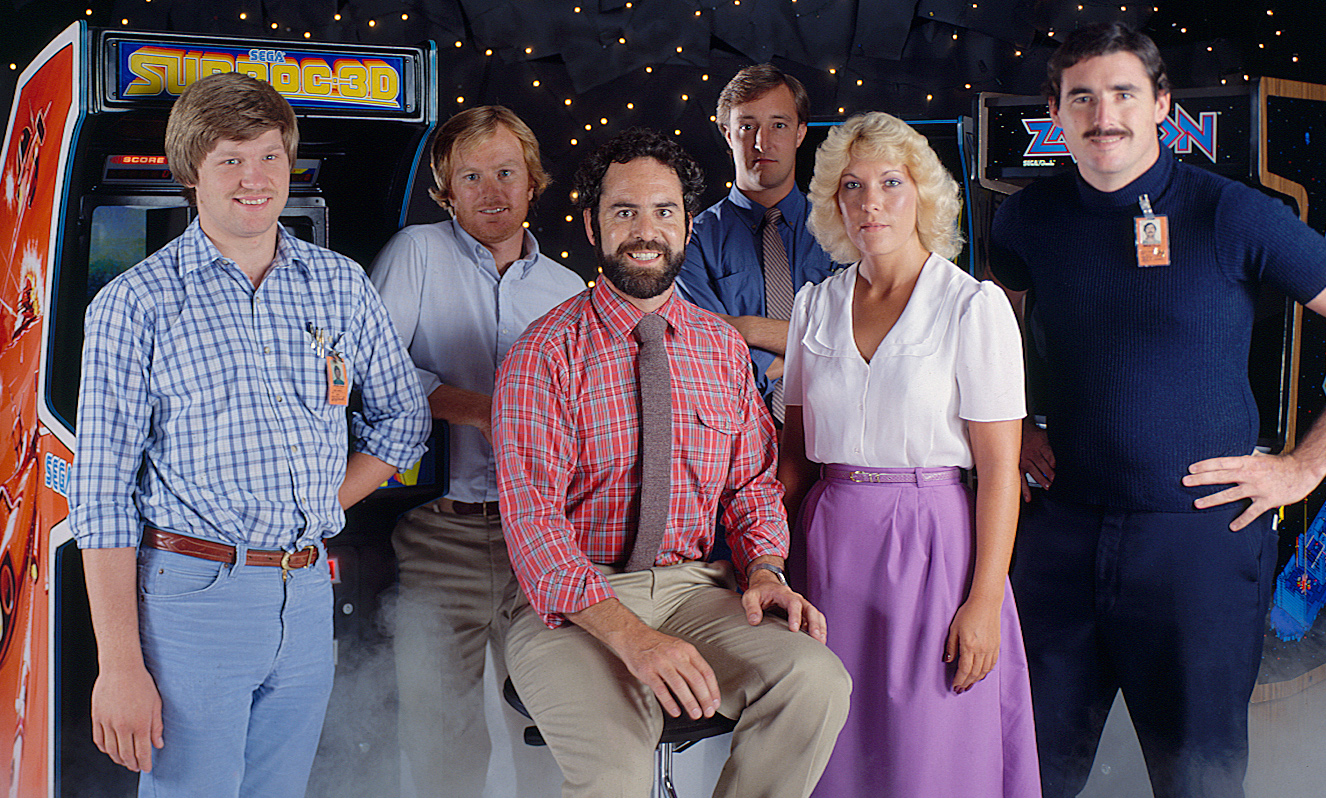Sega’s 1990s marketing is now legendary for positioning its 16-bit console, the Mega Drive, as the faster, edgier alternative to Nintendo. For several years of fierce console wars between the two companies, those ads worked brilliantly: Sega was cool, thanks to Sonic the Hedgehog and Blast Processing. But Sega’s innovative marketing techniques didn’t start with the Mega Drive—they can actually be traced back to the early 1980s, when they were a very different company.
In 1978, Sega—which was comprised of the American parent company Sega Enterprises, Inc. and the Japanese arm Sega Enterprises, Ltd.—acquired a San Diego game creator called Gremlin Industries to dramatically grow its coin-op business. Between Sega/Gremlin, their Japanese subsidiary, and the might of their parent company Gulf + Western, Sega managed to put out more arcade games than any other company during the early 80s golden age. How was Sega able to successfully sell all those games, earning $214 million dollars in 1982? Even a decade before “Genesis does what Nintendon’t,” savvy marketing was already giving Sega an edge.

Gremlin had done some marketing stunts in the 1970s, including hiring a pair of competitive “Gremlin Girls” who challenged (and routinely beat) players across the country in an arcade game called Hustle. Around 1980 Gremlin established an in-house video department led by Ron Stein. Stein’s job was to create videos showcasing their games, which could be lugged around and shown to distributors at trade shows on VHS tapes.
Distributors could use these “VideoFax” tapes to show operators what the new games were all about and provide some service info, as seen in Video 3 of this collection.
Gremlin didn’t just make these videos to inform distributors and operators about what they were buying. They were selling Gremlin’s commitment to producing high-quality games and showing off the company’s personality. The cheesy sketches which litter these tapes (like Video 13) give the impression of a small company that still knew how to have fun, but with the corporate backing that allowed them to dress in Star Trek uniforms and even include corny, self-aggrandizing musical numbers.
Gremlin put out a steady series of tapes for new releases, almost always focusing on the games first and foremost. Their larger advertising points, such as Multi-Phase (games that increased in difficulty between challenges) and Convert-a-Game (easily convertible arcade cabinets), were always topics they wanted to address in person, so the videos make no attempt to explain those concepts. The videos were there to showcase their grand ambition: becoming the world’s largest arcade manufacturer. As seen in the hilariously dramatic Video 18, they were adamant that this ambition was well-supported. “It’s pride in performance that aspires men to greatness. To reach for impossible goals, just to experience the exhilaration of knowing you made it,” the narrator says, over photos of the space shuttle blasting off.
Gremlin’s innovative marketing wasn’t just for people who worked in the arcade market. They partnered with outside companies to advertise their games in movie theaters, creating the first arcade game commercial for 1982’s isometric shooter Zaxxon and a series of sophisticated commercials by Dailey and Associates seen in Videos 19 to 21.
These commercials feature an early (though disclosed) version of the misleading marketing “bullshot,” using Commodore 64 and Atari 400 graphics while clearly implying the game was being played on the Atari 2600.
The final two tapes showcase how games were permeating mainstream media in the early 1980s. An episode of the sitcom Gimme a Break! on Video 10 has two characters playing at a Cinematronics Vanguard machine with Pac-Man and Battlezone in the background. They lampoon Frogger with a converted Asteroids cabinet labeled “Froggy Hop,” which was denoted by the owner of the physical tape.
Video 9 showcases a report on shady arcade machine investment in the middle of the Golden Age. An investigative journalist tracks down the company responsible for giving fraudulent earnings numbers on unpopular arcade machines. This tape, while not dealing with Gremlin specifically, showcases just how fervent the race to capitalize on video games was in the Golden Age.
There’s a sense of hope and drive in these corny advertisements, showcasing both the joy and decadence of easy money at the height of the arcade boom. Unfortunately Sega/Gremlin did not survive the transition after the bottoming out of the arcade market at the beginning of 1983, but they left us with plenty of interesting games along with these artifacts which are now available on Archive.org and YouTube.
For further reading on Sega/Gremlin, I recommend the book The Sega Arcade Revolution: A History in 62 Games by Ken Horowitz.
Disclaimer: I personally contributed interviews and research which appears in the book.
(Thanks go out to the providers of these tapes and materials: Frank and Keturah Fogleman, David Conover, and Cherry Sweig. Additional thanks to all the Gremlin employees who have spoken with me.)